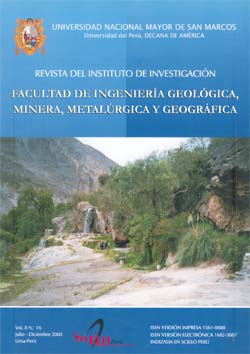«EL NIÑO» PHENOMENON’S ORIGIN FOR ENERGETIC DECOMPRESSION THE EARTH
Keywords:
Compression, Decompression, Tectonic, Antipode, Plate, Subduction, VulcanismAbstract
The following is a theorical yet exploratory and descriptive study, on which it is sustained that the Sun’s additional energy provided from the Earth’s core produces «El Niño» phenomenon trough energetic decompression through the weakest zones or Subduction zones of the Pacific Ocean’s, Ring of Fire. That, depends on: The Earth’s interior dynamic, plate tectonics, energetic antipodes and the Earth’s rotation. The Pacific Ocean, surrounded by the Ring of Fire, both in the East and West, has «Subduction zones» –deep failures– where the Earth’s inner energy escapes alternatively; giving place to «El Niño» Phenomenon (on the Pacific East) and «La Niña» Phenomenon (on the Pacific West) –or viceversa. When the Earth’s inner energy is «explosive», it escapes through both Ring of Fire’s extremes, and also by some other failures. Subsequently catastrophic Niño Phenomena occur, according to the amount of gas, ash and sulfur eliminated by the Continental or submarine volcanos of the previous mentioned extremes. The proposal sustains that the difference of pressions from the Pacific East and West, discovered by Walker (1920), occurs due to an alternate decompression on the opposite extremes of the Ring of Fire; the oscillation among «El Nino» or «La Nina» phenomena –from extreme hots to the coldest ones (or viceversa)–occur for the decompression associated to the energetic antipodes and the Earth’s rotation; likewise, the presence or absence of trade winds and oceanic warm and cold currents are explained by the processes aforementioned.Published
Issue
Section
License
Copyright (c) 2012 Honorio Campoblanco Díaz, Julia Gomero Torres

This work is licensed under a Creative Commons Attribution-NonCommercial-ShareAlike 4.0 International License.
AUTHORS RETAIN THEIR RIGHTS:
a. Authors retain their trade mark rights and patent, and also on any process or procedure described in the article.
b. Authors retain their right to share, copy, distribute, perform and publicly communicate their article (eg, to place their article in an institutional repository or publish it in a book), with an acknowledgment of its initial publication in the Rev. Inst. investig. Fac. minas metal cienc. geogr.
c. Authors retain theirs right to make a subsequent publication of their work, to use the article or any part thereof (eg a compilation of his papers, lecture notes, thesis, or a book), always indicating the source of publication (the originator of the work, journal, volume, number and date).






